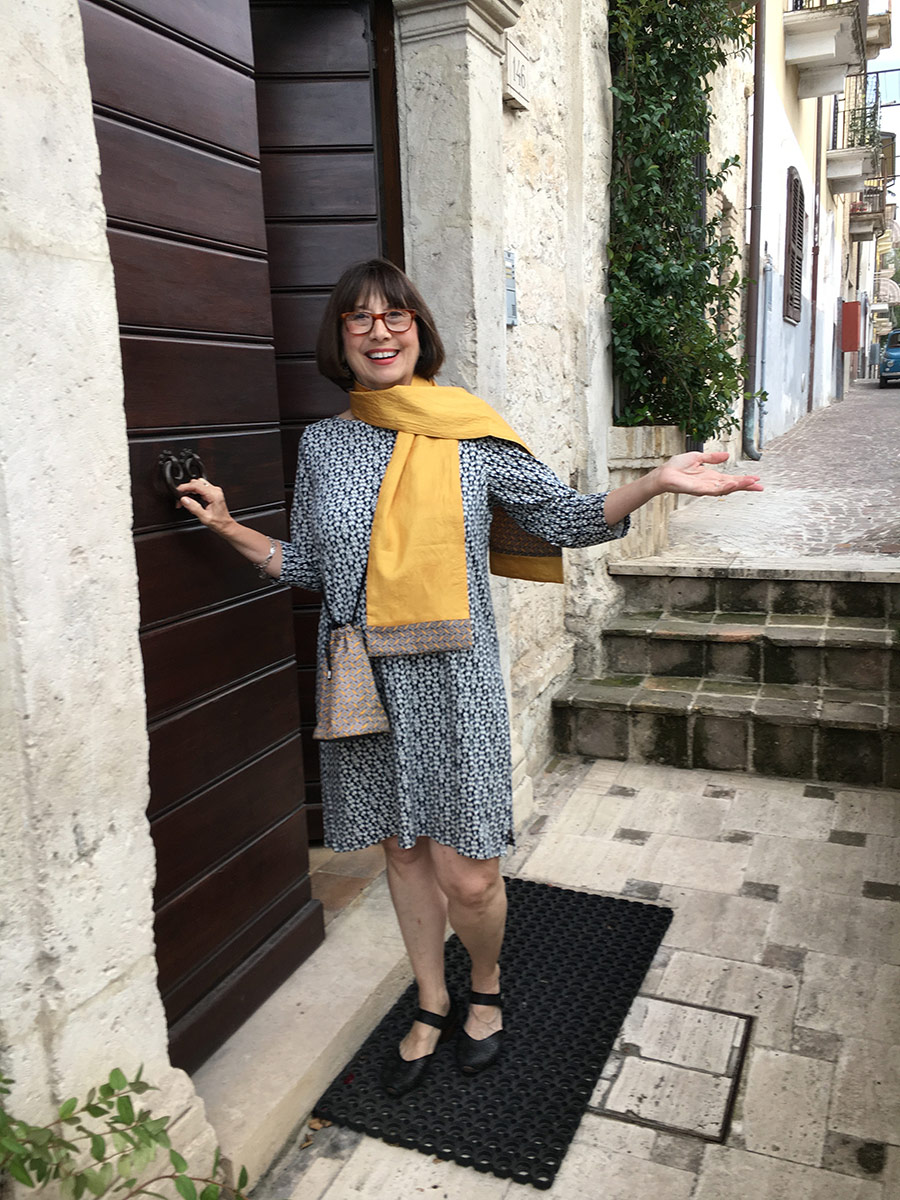The trouble with eating Italian food is that five or six days later you’re hungry again. — George Miller
The little wooden stool has been in my house forever. Ever since my grandfather died, at least, and we cleaned out his house. My father was going to throw it away. I said no.
The stool has no value whatsoever. It’s just one of those common pine stools you used to see a lot in the 1950s; my grandparents probably bought it at Woolworth’s or W.T. Grant in Freeport, New York where they lived. It still has a price scrawled in red crayon on the bottom of the seat: $3.49. Why do I care so much about this worthless little stool? Because it’s the same stool my grandfather taught me to dance on. He’d put me up there when I was a little girl and hold my hands, twirling me around like one of those ballerinas who spun madly in place in a little girl’s mirrored jewelry box.
But — and this is really more important — this is the stool my grandmother dragged over to the stove while she cooked. She put me up there and showed me what she was doing: stirring sauces, adding seasonings, pounding chicken . . . you name it, I watched. And I learned. Because of her, I lighten up the ricotta in my lasagna filling with eggs. Because of her, I keep the mappines ever-present on my left shoulder while I prepare the meal. My husband says I have a certain way of adding spices to the pot and cheese to the finished plate — if that’s true, it comes from her, too. And don’t get me started on salting the sliced eggplant to remove the bitterness . . .it used to sit in a colander on a plate in the refrigerator, a heavy iron weighing down the upside-down plate on top of the pile, forcing the brownish juices out overnight.
Mind you, I was only six years old when my grandmother died. She was not a big woman — but she was about as wide as she was tall. And she made an impact. No formal education, but able to do compound interest in her head. She would take her husband’s cash salary to the store in a grease-stained paper bag and do her shopping to the humiliation of her two boys. I never saw her without a flowered dress on and an apron on over that. Her graying hair was tucked up into a net and her kitchen smelled of olives and basil. She knew how to stretch a dollar (and a pound of ground beef) so hard that my father used to say that in his little Catholic family you could even eat the meatballs on Friday.
Well, I grew up loving food — and cooking it. And eating it. Too much of it, sometimes. My lifetime member status in Weight Watchers® can attest to that. But I always love to read new cookbooks, and when I heard about Two Meatballs in the Italian Kitchen last year, I just had to have it. Written by Tuscan chef extraordinaire Pino Luongo and Queens, NY native and top chef Mark Strausman, Two Meatballs in the Italian Kitchen is a delightful read and a great resource for anybody who loves Italian food. Its more than 150 recipes just might bring tears to your eyes. And their introductions to each section of the book will most certainly have you in tears, but for a different reason.
The unique thing about Meatballs is that it is not just a cookbook — it’s a conversation between two
professional chefs, both true believers in Italian cuisine, as well as former partners in Manhattan’s legendary, but alas now closed, Coco Pazzo restaurant for more than 20 years. Listen to the two of them argue about the right way to make eggplant parmigiana and risotto. Read as they almost come to blows over the best way to cook a meatball: small, in olive oil? Or American-sized, simmering in tomato sauce? It’s all about fresh, simple foods approached from two different perspectives: the “authentic” Italian who brings his culture and traditions with him into the kitchen and the New Yorker with a culinary school background and an appreciation for the occasional shortcut and (to a degree) the American palate.
This is a delightful book and an important addition to any Italian cook’s bookshelf. It is a joy to read and provides as much information as any first-rate Italian cooking class could convey, right down to the wine pairings with each recipe. There’s a sign over the kitchen door in one of my favorite Italian restaurants here in Midlothian that says Mangia e statti zitto. It’s all you need to know. Go out and get Two Meatballs in the Italian Kitchen, cook something wonderful — and Shut up and Eat!
Buon viaggio!

Linda Dini Jenkins is a card-carrying Italophile, travel planner, freelance writer, and amateur photographer. Travel is her passion, so writing about her travels just comes naturally. She hopes all her travelers find a way to express their joys, surprises, and fears as they travel and gives every traveler a nifty journal to help smooth the way. Learn more…




